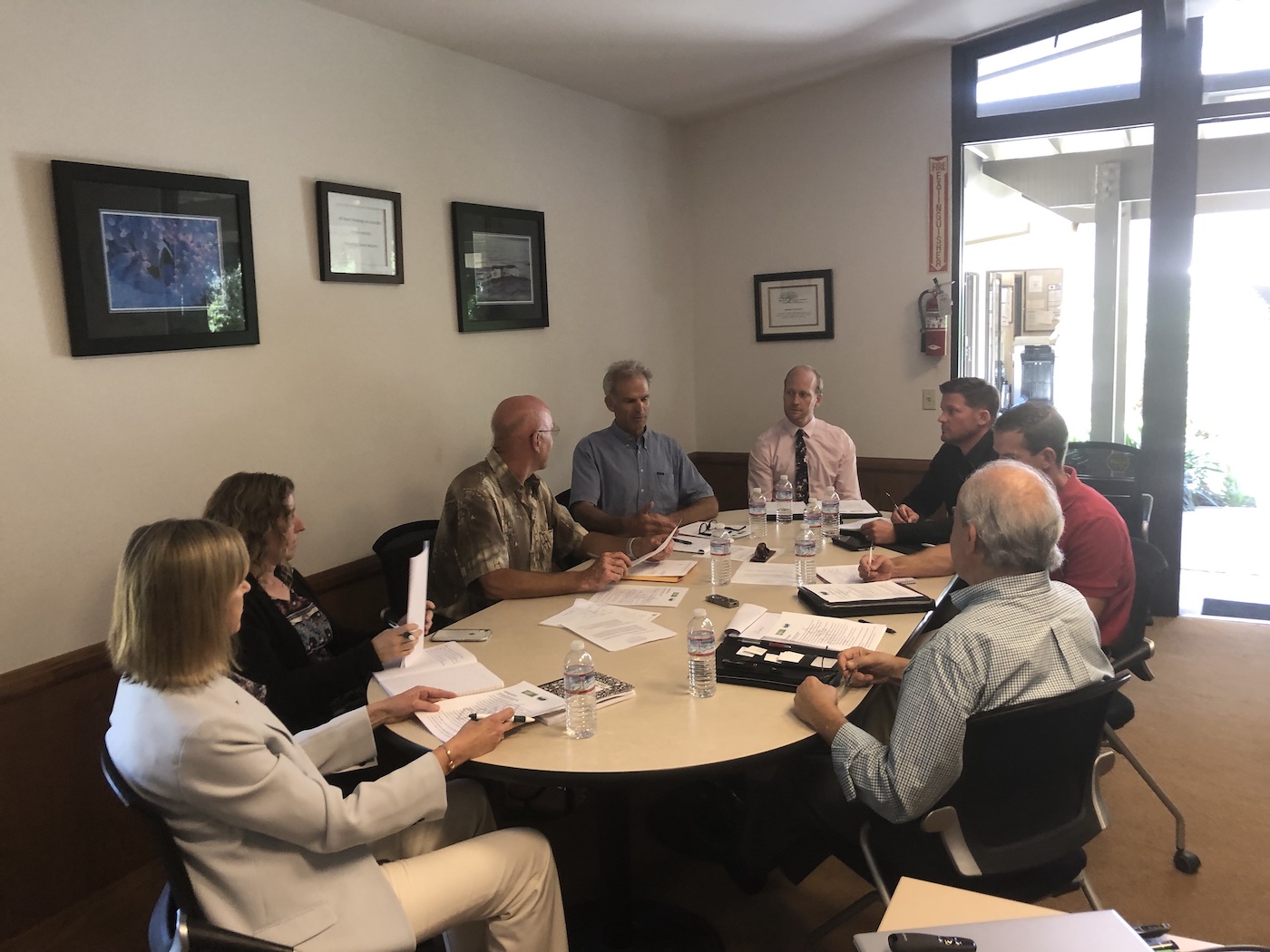Recycled Water Update

After meeting on Tuesday, July 2, the joint committee of the Montecito Water and Sanitary Districts continues to move forward on several viable water reuse projects.
Water reuse options being pursued involve different treatment levels and different end-uses, including landscape irrigation (purple pipe), which involves treating wastewater for use in irrigation for large-scale commercial and institutional applications, not residential users. End-users are targeted to be those with significant irrigation needs, such as cemeteries, large hotels, and golf courses in the community of Montecito. Another option includes groundwater injection, in which wastewater can receive advanced treatment and be used to augment groundwater supplies. Data collection is required to determine if injection is feasible in the Montecito groundwater basins.Two actions supporting water reuse are in progress and scheduled for completion in the next few months, including a Pilot Project to produce a small volume of irrigation water and to provide data on operations and costs, and a Groundwater Augmentation Feasibility Analysis to provide information on the Montecito groundwater basin’s ability to receive injection of recycled water.
A Recycled Water Feasibility Study completed at the end of 2018 identified these potentially viable water reuse projects involving MWD and MSD; the Districts are currently collaborating to determine the best approach for the community. MWD and MSD have held four joint committee meetings regarding the implementation of water reuse since the beginning of 2019. Participants are MWD Directors Floyd Wicks and Brian Goebel, MSD Directors Tom Bollay and Jeff Kerns, and staff from both agencies. The joint committee’s next meeting will be on July 29 at 10 am at the Montecito Water District, 583 San Ysidro Road. The public is encouraged to attend.
For more information on the Recycled Water Feasibility Plan go to: https://www.montecitowater.com/doc/5346/.
Land Use Committee Meets
At this month’s Montecito Association Land Use Committee meeting, Kirsten Ayars with SB Roads and SBCAG’s Fred Luna gave an update on the 101 freeway widening, a portion of which will be in front of Montecito Board of Architectural Review next week.
Ayars began the presentation by recapping the entirety of the freeway widening, which began as a series of operational improvements to mitigate bottlenecks in the early 2000s. Now a long-term plan to add a third HOV lane to both directions of 16-mile segment of the freeway, the project is broken up into four phases, with the first two phases (Milpas to Hot Springs and Carpinteria to Mussel Shoals) already completed. Phase 3, which is the reconstruction of the Linden and Casitas Pass overpasses, is expected to be finished this summer. Phase 3 is to get the Carpinteria portion of the freeway ready for widening, which will begin next summer as Phase 4A. Phase 4, which includes 11 miles from Carpinteria to Santa Barbara, is broken up into four segments, three of which are already funded, Luna said. The section from Padaro Lane to the Sheffield interchange (4C), is in the design and permitting phase, with a first meeting at MBAR on July 11. “Ultimately our goal is to be at Montecito Planning Commission at the end of this year,” Luna said.
The 1.9-mile Sheffield section of the freeway was discussed at Land Use; the Sheffield interchange is being completely rebuilt and will include two separate bridges for the southbound and northbound sides. The left-hand exit and entrance on the southbound side will be changed to be on the right side, and sound walls and retaining walls will be added on the northbound side, in addition to aesthetic improvements to the bridges. The expansion at that interchange does not allow for median landscaping; the landscape plan includes native plantings to screen the sound walls. Members of the public are encouraged to attend next week’s MBAR meeting to give input on the design of the project.
Ayars explained that the widening project is part of a concept called “Lane & Train,” which surmises that 64% of the freeway congestion can be handled with an HOV lane, and 18% can be mitigated with a peak hour rail service, which began in April 2018. Luna estimated that the peak hour rail serves about 100 riders a day, which is fewer than originally planned. For more information, visit www.sbroads.org.
Also at Land Use: Sharon James and Jerry Ambrose from Crown Castle gave a report on the most recent project to install six small cell telecommunications facilities in Montecito. The project, which has been in the works since 2017, is to improve cellular capacity for AT&T, and includes sites at 1071 Alston Road, 206 Middle Road, 277 San Ysidro, 75 Eucalyptus Lane, 1915 San Leandro Lane, and 2023 East Valley Road. The project includes adding a small antenna on top of an existing utility pole, as well as an equipment box mounted on the side of the pole. Crown Castle has been at MBAR and MPC over the last few months, and will be back at MBAR next week on July 11 and at MPC later this month. “I think it depreciates our property and the aesthetics of the area,” said the homeowner who lives near the Alston Road project.
Crown Castle, which was called NextG up until several years ago, has been in the news in Montecito for the last decade, periodically installing multiple-site projects for various cell phone companies. An 11-site project was denied by the Montecito Planning Commission back in 2012, and was subsequently successfully appealed to the Board of Supervisors. In 2013 and 2014, the company installed a 29-site project for Verizon Wireless. Local government is limited in regulating such projects, as the federal government regulates telecommunications service. Earlier this year, local governments were limited further, and are now not allowed to ask infrastructure companies to look for alternative sites, even if there is neighbor opposition. Crown Castle is the largest provider of wireless infrastructure in the country.
The Montecito Association’s full board of directors will meet next Tuesday, July 9. For more information, visit www.montecitoassociation.org.





